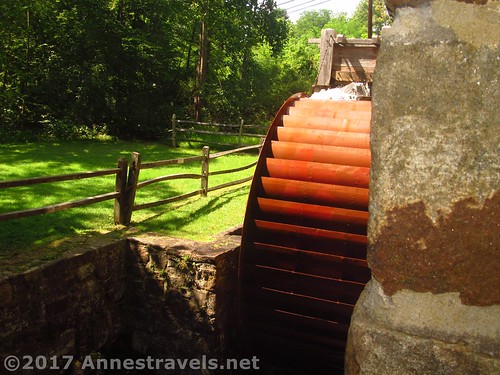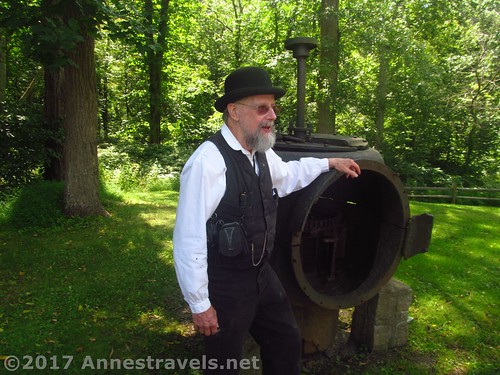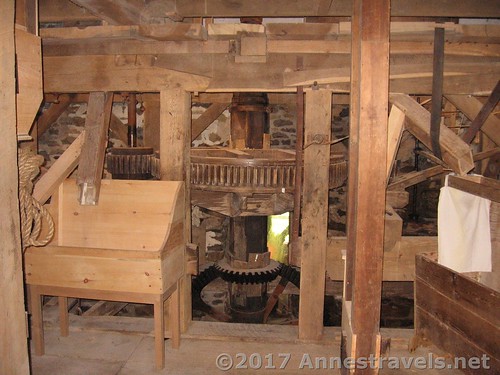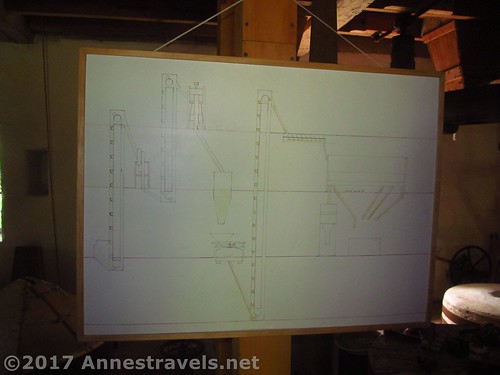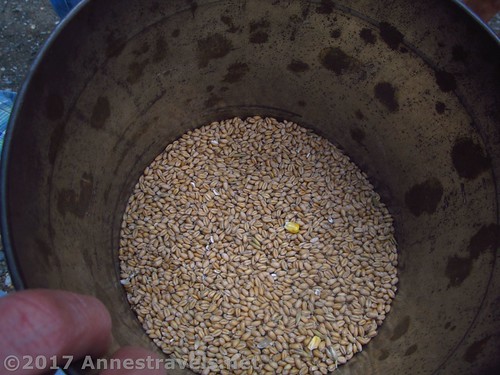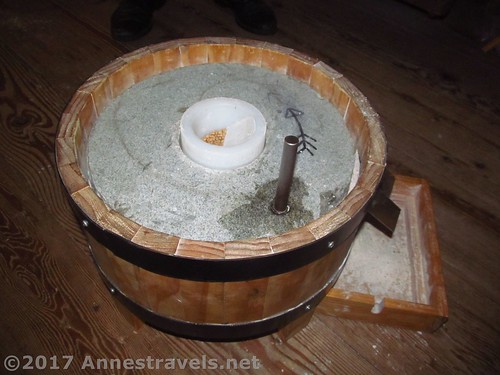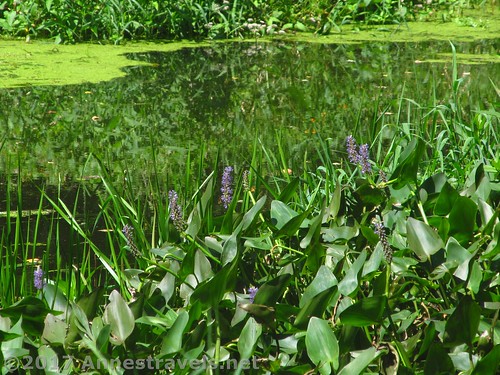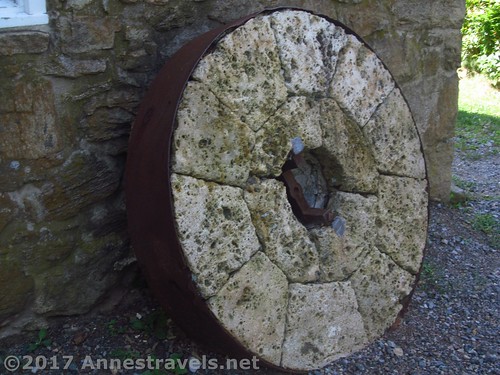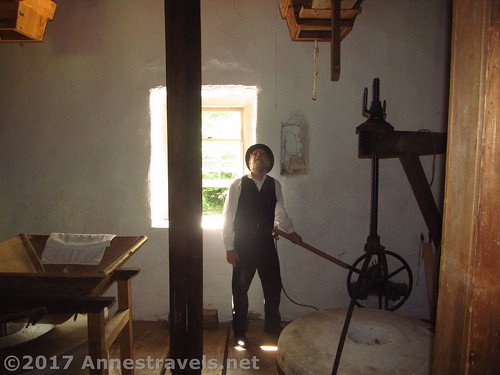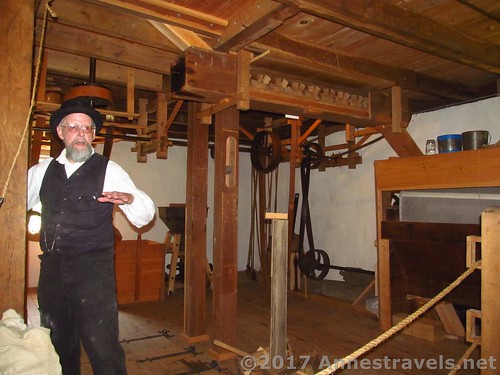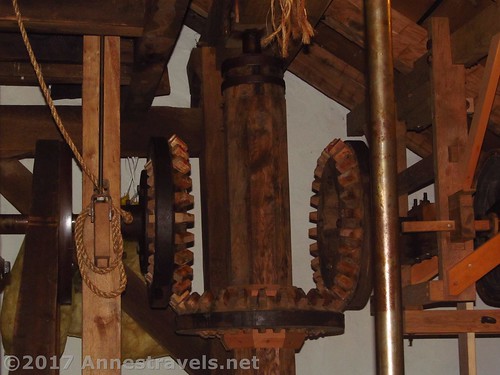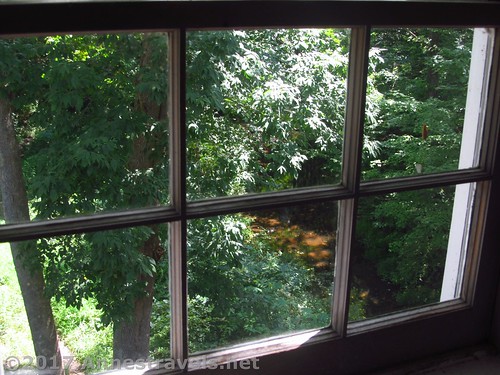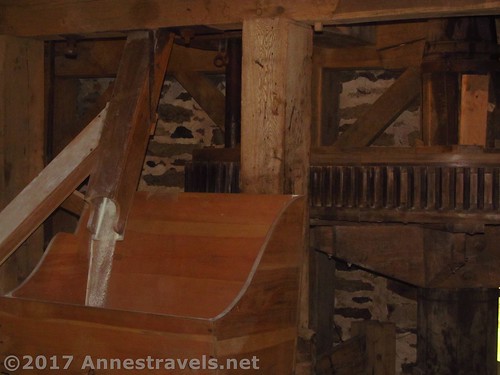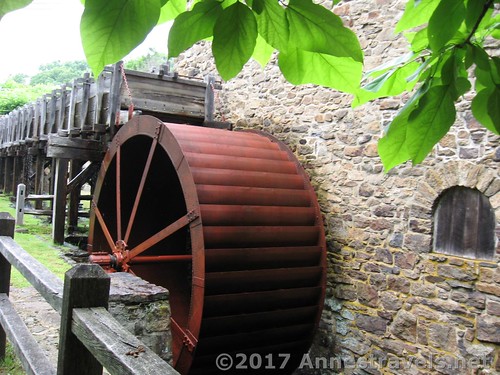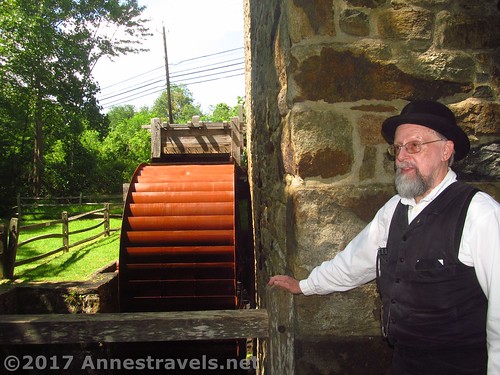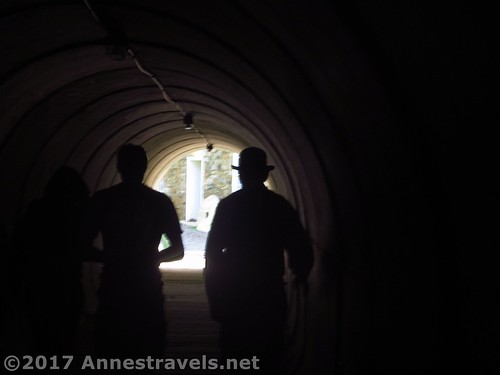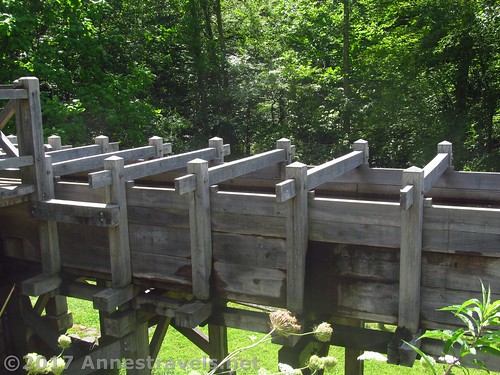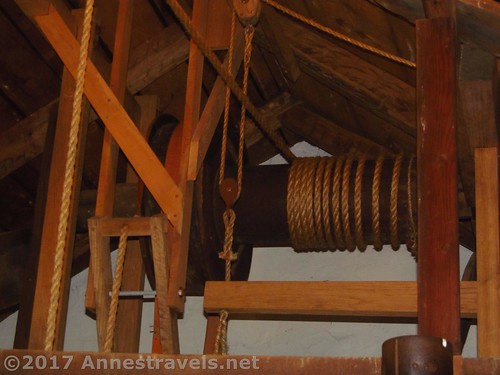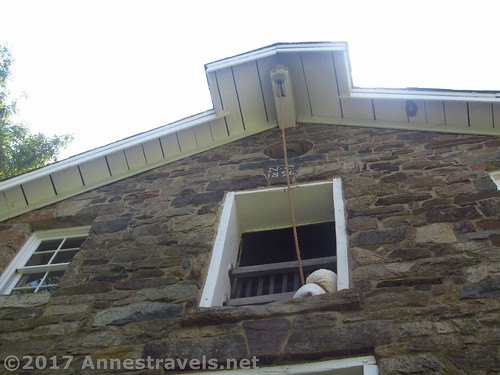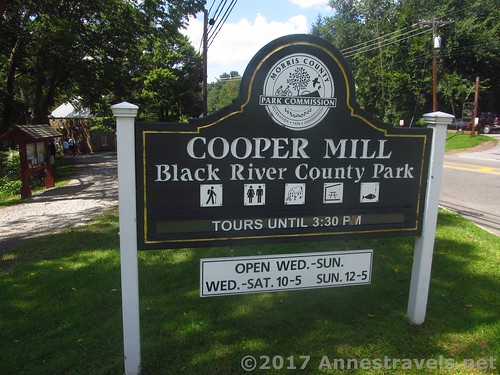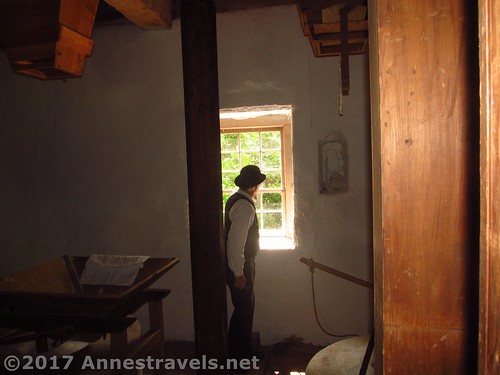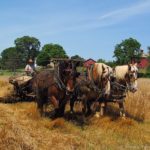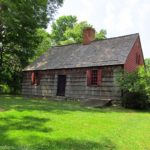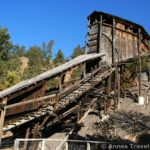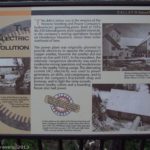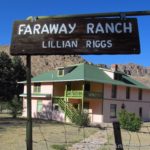Cooper Mill, in Chester, NJ, is definitely an overlooked attraction. Maybe it’s because the region is filled with so much history that people go to Washington’s Headquarters in Morristown or take in the sights of freedom in Philadelphia. But whatever the reason, it’s a really cool piece of history, the interpreters are extremely knowledgeable, and while I’d recommend a donation, it doesn’t have to be all that expensive. You could easily spend an hour on the tour, and if it’s not too busy, you might find yourself deep in conversation with the interpreters, learning things you never really thought about.
Quick Stats for Cooper Mill
Like, did you know that the interpreters at these places often make their own period clothing, and they have to visit thrift shops and garage sales to get cloth that looks old enough to be legit?
I first visited the mill on a 4th of July while on a bike ride along the West Morris Grade / Patriot’s Path 10 years ago. We happened by the mill when the trail became so covered with fallen trees and roots that we could no longer ride our bikes, so we took to the road. It was a phenomenal stop then, and it still is!
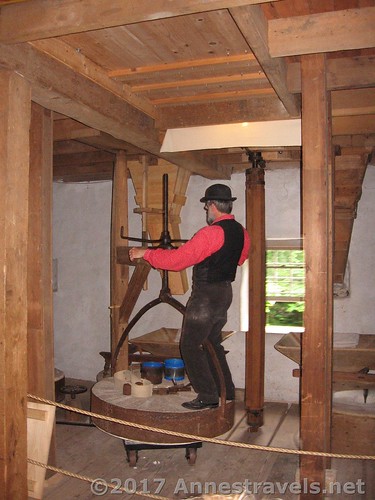
The interpreter, on our first visit, demonstrates how easy it is to lift the millstone – and himself – using a screw made for the purpose
The first gristmill was built on this sight in the early 1700s. The property – we don’t really know what happened before, except that it was damaged in a fire – was purchased by Nathan Cooper in 1825. He rebuilt the mill in 1826; the mill today is the same structure as what Nathan Cooper built. The same year, Nathan passed away, and the mill was passed on to his nephew, also named Nathan Cooper. This Nathan owned the mill property (and became quite wealthy by it and other business ventures) until his death in 1879. However, he hired a resident miller to actually run the mill. The miller’s house once stood across the road from the mill.
Today tours are offered, free of charge, of all four stories of the Cooper Mill. During these, visitors can try their hand at old methods of grinding grain, feel what the grain felt like and what the different grades of flours are like, learn how flour is bleached (they used to use plaster among other things), see the old millpond, watch the mill workings in use, and see the water wheel turning, and more.
We arrived just as a tour was starting, so we joined them looking at what replaced the water wheel and then walked down to the mill proper.
The guide – it’s a pity that he’ll be retiring in a few weeks; he is a phenomenal interpreter and knows the mill inside and out since he did most of the restoration work – talked about how the grain used to be ground before mills came to the area.
Then he took us under the road to see the millpond. Actually, the road was once quite a bit lower, but when it was straightened in the 1970s, they kindly put in a path under the highway for hikers of Patriot’s Path. The millpond is pretty much silted in (“some of those weeds are as tall as trees…”), but it’s pretty and the waterfall is nice.
He also explained about the millstones – French stones were made in many sections instead of one large stone with grooves. This allowed the husks of the wheat berries to be in larger sections, therefore easier to strain out, therefore producing whiter, finer flour.
We explored the first floor…
The second floor…
And the third floor.
All are fascinating. You’ll have to visit to learn about them, though, because it’s all too complicated to explain except to say that it’s a lot of wooden gears and pulleys and leather belts, with a few ropes and levers put in for good measure.
One interesting fact for you: People would go down to the millstream to fish. The bran was often discarded into the stream by millers who didn’t want to sell it as animal food. The fish loved it, and therefore, the fishing was good.
Then we went down to the basement, where the flour finally comes out of the chute.
From here, we went outside to see the water wheel. It was originally made in 1927 for a mill in Pennsylvania. Sadly, that mill burned down before the wheel could be put to use. It was then used on another mill in New Jersey from 1935 to 1955. In 1974 the wheel was donated to the Cooper Mill.
Afterward, the guide was happy to stick around and talk about all things historical, especially the mill and culture of the day. I would have loved to have talked longer with him!
Overall? It’s fantastic! Spend an hour, no more than two, but you’ll learn… well, a lot!
Fees: None, but donations are encouraged. Suggested donation is $3/adult, $2/senior (65+), $1/ child (4-16), those under 4 free
Facilities: A couple picnic tables by the parking area. There may be restrooms in the visitor center on the opposite end of the parking area from the mill, but I’ve never been in it. A restaurant is across the street, with many more options in nearby Chester (if you like shopping, check out Chester’s shops and boutiques)
Hours: April-June: Saturday only 10am-5pm. July-Aug: Wednesday-Saturday 10am-5pm, Sunday 12 Noon-5pm. September-October: Saturday 10am-5pm, Sunday 12 Noon-5pm.
Tour Times: Tours are continuous / on demand depending on current need. If you go down to the mill and a tour is not in progress, a sign will direct you to the visitor center. You can also join a tour half way through and then catch the first half of the tour at the end of the first one. Last tour is at 3:30pm.
Road 




Signs 




Interest 




Fun Factor 




Exhibits 




Personnel 




Cleanliness 




Ease of access / walking 



 (stairways)
(stairways)
Price for value 




Would I go 100 miles out of my way for this? 




Overall Rating: 




Key GPS Coordinates
Cooper Mill: 40.7789900°N, -074.7211300°W (40°46.73940’N, -074°43.26780’W / 40°46’44.3640″N, -074°43’16.0680″W) (718ft.)
Getting to the Cooper Gristmill
From I-78, take Exit 29 to I-287 North toward Morristown and Somerville, staying in the right lane to go North toward Morristown. Less than a mile later, take Exit 22B toward US-202 and US-206 North, Bedminster, and Netcong (don’t you just love these 1700s town names?) Drive north on US-206 8.8 miles. After passing the ShopRite, turn left on Main Street (major intersection with a traffic light; turn right and you’ll see a lot of little boutiques and shops). The parking area will be on left after 1.3 miles.
From I-80, take Exit 27A toward US-206 South and Somerville. Stay on US-206 8.1 miles; turn right on Main Street. The parking area will be on left after 1.3 miles
(Note: You’ll pass Alstede (pronounced “All-sted”) Farm after turning onto Main Street. I highly recommend their sweet corn, in season, and it’s also fun to look all the animals, climb the hay bales, etc.)
Zoom map out to browse nearby hikes & places of interest
This Week’s Featured Product!
Learn New Jersey’s history by exploration with this book on walking through the Garden State. Besides history of the places the author chooses to walk, other nearby attractions are suggested for further exploration.

